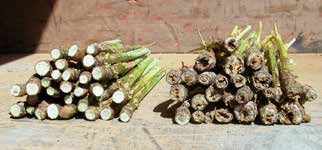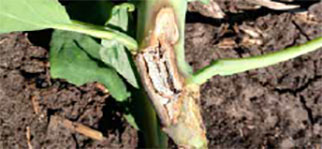Stepping Up The Fight Against Blackleg
With today’s shortened canola rotations, Pioneer believes it’s more important than ever to understand the causes of blackleg and the management toolbox that’s available.
Blackleg is a serious disease of canola that was first detected in 1975 in northeast Saskatchewan and has since become widespread throughout western Canada. According to the Canola Council of Canada, yield losses up to 50% have been reported in individual fields.









